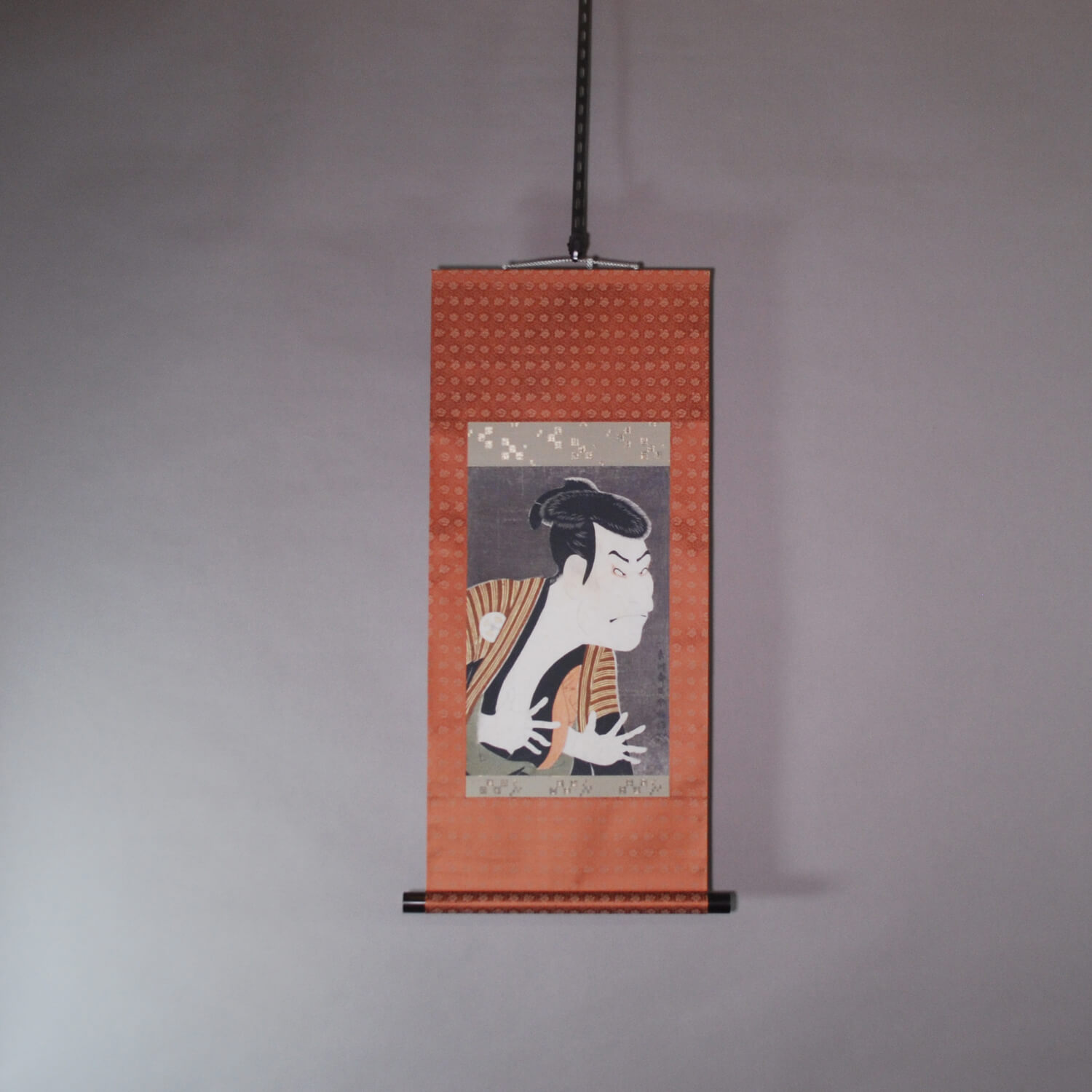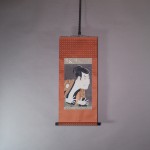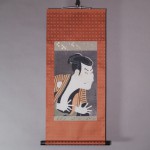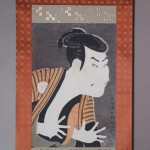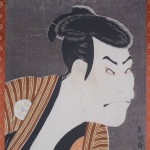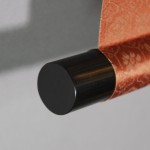Products Lineup
News / Blog
Other Menus
Kakejiku Hanging Scroll: Oniji Ootani III (aka. Nakazou Nakamura II) as Edobee / Sharaku Toushuusai -
- Product ID
- 0175
- Name
- Sharaku Toushuusai
- Profile
The 18th century
Ukiyo-e artist- Size
- 425mm x 630mm
- Roller End Material
- Red sandalwood
- Material of the Work
- Chemical fiber / Printed
- Stock Condition
- In Stock
- Description
Sharaku Toushuusai was an ukiyo-e artist in the middle of the Edo period. He published 145-odd artworks over a 10 month period from 1794 to 1795.
One of the main characters on the dramatic entertainment “Koinyoubou Somewake Tazuna,” held at Kawaharasaki-Za theater in May 1794, was depicted in this artwork. This drama showed the illicit intercourse incident between Yosaku Date, a vassals of the Daimyou (a Japanese feudal lord), and Shigenoi, Okujyochuu (a maid in a palace in Edo period).
Samanosuke, a young Lord, prepared a large sum of money to redeem a geisha (Japanese singing and dancing girl). Edobee, in the role of a villain, attacked Yakko Ippei, who is conveying the money. Indeed, the depiction of Edobee, getting threateningly closer with open arms, makes one feel the ghastliness of the wrongdoer. The composition is full of realistic sensations as if to convey a tense atmosphere on the stage.
The yakusha-e (paintings of actors) were, so to speak, photographic portraits of popular idols. When depictions of actors on the stage went on sale at the time of their performances, fans bought art depicting their favorite actor in a body. Many landscape ukiyo-e have survived, but these yakusha-e and the bijin-ga (paintings of beautiful women) were an essential genre of the ukiyo-e prints until the time when the landscape ukiyo-e attracted attention through the good reputation of Hokusai Katsushika’s Thirty-six Sceneries of Mt. Fuji. We can say that depicting the latest fashion and producing fresh topical works, for example the most popular performances and actors, were the very essential qualities of the ukiyo-e. Many yakusha-e (ukiyo-e-style actor prints) were produced by various ukiyo-e painters every time that kabuki performances were held. Why is Sharaku so popular among them now?
It was important for the fan of those days that depicted actors looked attractive on the ukiyo-e. However, Sharaku depicted features of the actors’ closeup face in detail, adding exaggeration. Oniji Ootani III As Yakko Edobee was the very representative that showed the features of Sharaku’s works saliently. The almond-shaped eyes, the big aquiline nose and the protruding jaw — Oniji Ootani is never depicted as a handsome man, but the work is full of the actor’s power, playing a villainous role completely.
This novelty style of Sharaku’s was welcomed with wonder at first, however the depiction that revealed facial faults didn’t become popular among the actors and fans. Toyokuni Utagawa, who was an ukiyo-e artist during the same period as Sharaku, had a beautiful painting style and was the most popular.
Thus Sharaku didn’t have a great success those days. However, he was introduced as one of the world’s top three portrait painters in a book by Julius Kurth (German art historian) after about 100 years, and his realistic depiction distinguished him from other ukiyo-e artists and was appreciated all over the world.
Sharaku and this work was unique as an ukiyo-e artist. However they became to be known to everyone because he depicted not only beauty and ugliness but also character and inner psychological world of actors.

